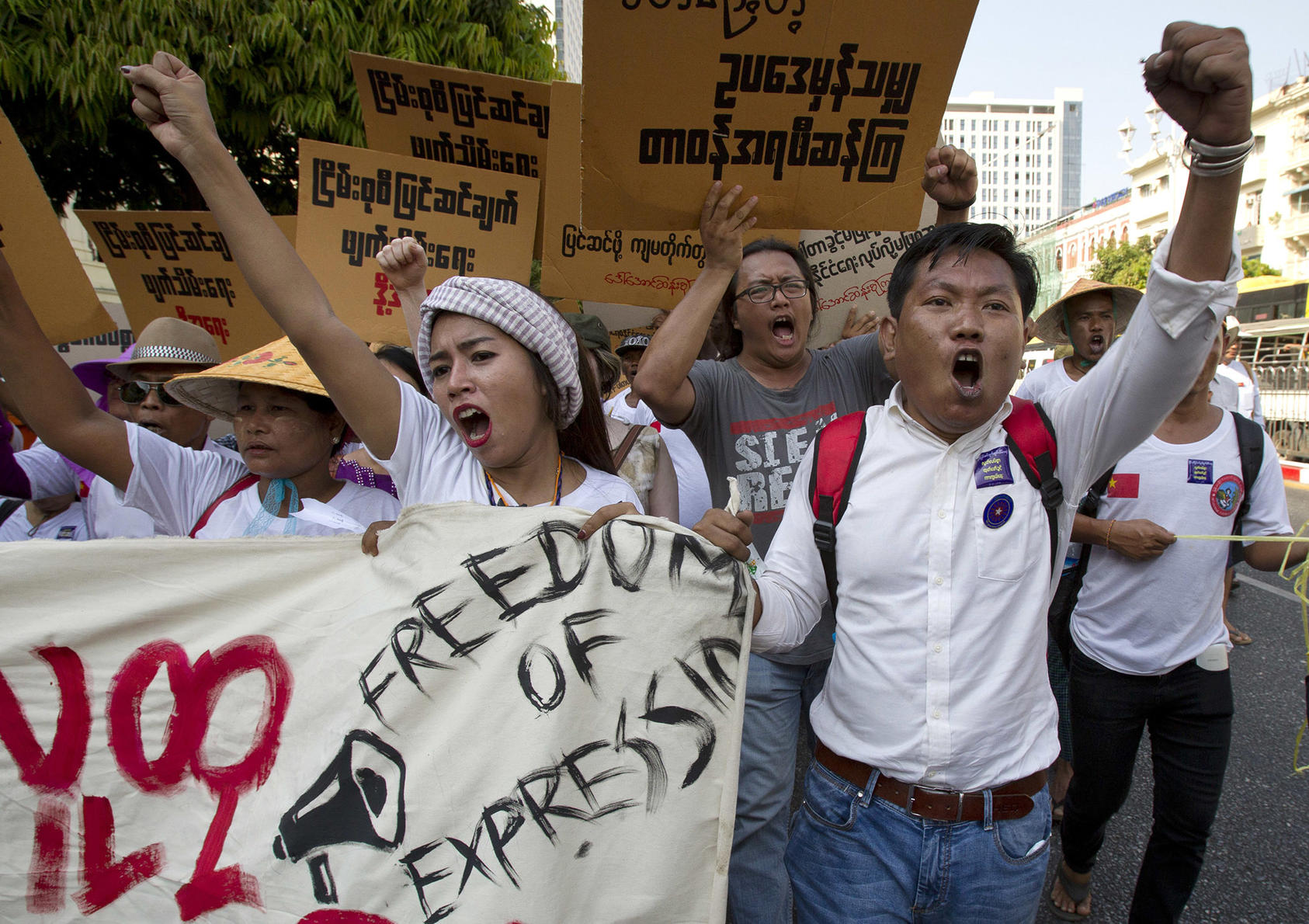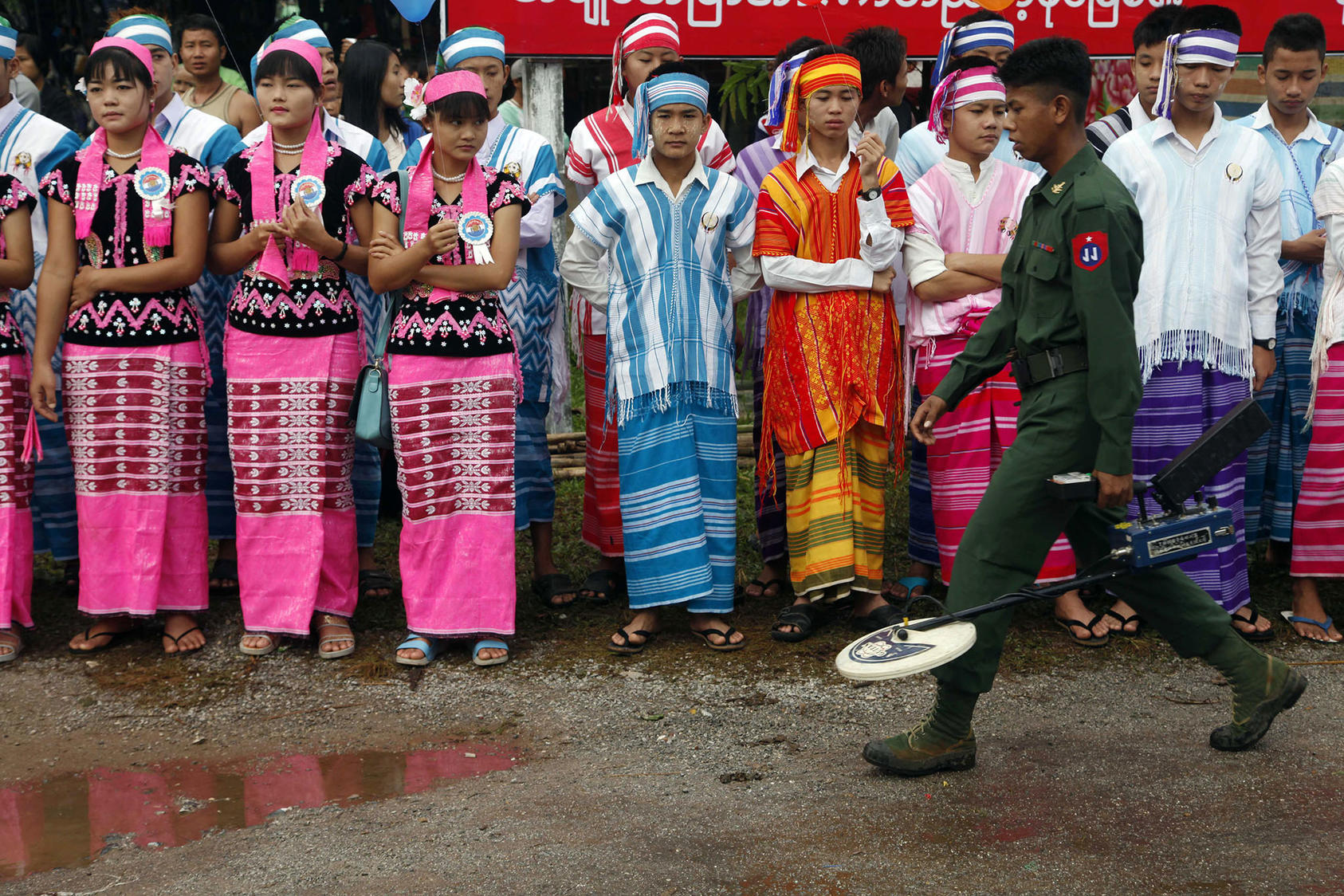Challenges and Lessons for Civil Society and Donors
by La Ring; Khin Sandar Nyunt; Nist Pianchupat; Shaazka Beyerle, US Institute for Peace, Washington, September 18, 2020
Full report at https://www.usip.org/publications/2020/09/nonviolent-action-myanmar-challenges-and-lessons-civil-society-and-donors

- As the forces binding the political opposition and civil society can fray after nonviolent transitions from authoritarianism, the relationship of Myanmar’s civil society—including social movement actors—with the governing National League for Democracy (NLD) has become contentious, with reduced levels of trust, in the midst of shrinking civic space and other mobilization challenges for strategic nonviolent action.
- Despite state and nonstate repression, Myanmar’s nonviolent movements and campaigns continue to mobilize, often with youth in the vanguard. They are pressing for an end to armed conflict, championing freedom of expression, and challenging the military’s influence.
- International support to social movement organizations appears to be minimal and usually consists of subgrants handled through international and national intermediaries. This approach has hampered donor engagement with local actors and unintentionally contributed to intra–civil society divides.
- Donors should localize priorities and support sustained solidarity in the face of shrinking civic space, and enable nonviolent action capacities and youth leadership development through flexible financial and nonfinancial assistance.
About the Report
This report explores the challenges facing civil society actors in Myanmar as they push for good governance, democracy, and peace. Based on in-country interviews and focus group discussions in 2019 with social movement and civic actors, national and subnational civil society organizations, and international actors, the report was supported by USIP’s Program on Nonviolent Action and the U.S. Department of State’s Bureau of Democracy, Human Rights, and Labor.
About the Authors
La Ring is a democracy and human rights researcher and educator and a former Asian Peacebuilders Scholar at the U.N.-mandated University for Peace. Khin Sandar Nyunt is a human rights activist, researcher, and former Civil Society Leadership Award scholar at Maastricht University. Nist Pianchupat is an international development researcher and former Asian Peacebuilders Scholar at the U.N.-mandated University for Peace. Shaazka Beyerle is a senior fellow at George Mason University’s Terrorism, Transnational Crime and Corruption Center.
Why Burma’s Peace Efforts Have Failed to End Its Internal Wars
by Bertil Lintner, US Institute for Peace, Washington, October 2, 2020
Full report at https://www.usip.org/publications/2020/10/why-burmas-peace-efforts-have-failed-end-its-internal-wars

More important, this is scarcely the first time the central government has tried to bring the conflicts to an end. The main difference this time is that foreign organizations have become involved in the process, and ethnic leaders and government and military officials have been sent to Northern Ireland, South Africa, Colombia, and Guatemala to study how those countries have achieved a semblance of peace.
The way forward, however, is in Burma’s own history of failed attempts to establish peace. The government and military now need to encourage serious discussions about what constitutional changes would satisfy the aspirations of the country’s many ethnic groups. They also need to end the divisive policy of separating ethnic armed groups into signatories and nonsignatories of the Nationwide Ceasefire Agreement. Last, all armed stakeholders need to work together at building an inclusive national identity. For international actors, priority should be given to leveraging the many lessons to be learned from the five previous attempts at peacebuilding in Burma.
International players also need to look deeply into China’s history and interests in Burma, which have always been a barrier to the realization of peace.
About the Report
Supported by the Asia Center’s Burma program at the United States Institute of Peace to provide policymakers and the general public with a better understanding of Burma’s ethnic conflicts, this report examines the country’s experiences of peace efforts and why they have failed to end its wars, and suggests ways forward to break the present stalemate.
About the Author
Bertil Lintner has covered Burma’s civil wars and related issues, such as Burmese politics and the Golden Triangle drug trade, for nearly forty years. Burma correspondent for the Far Eastern Economic Review from 1982 to 2004, he now writes for Asia Times and is the author of several books about Burma’s civil war and ethnic strife.